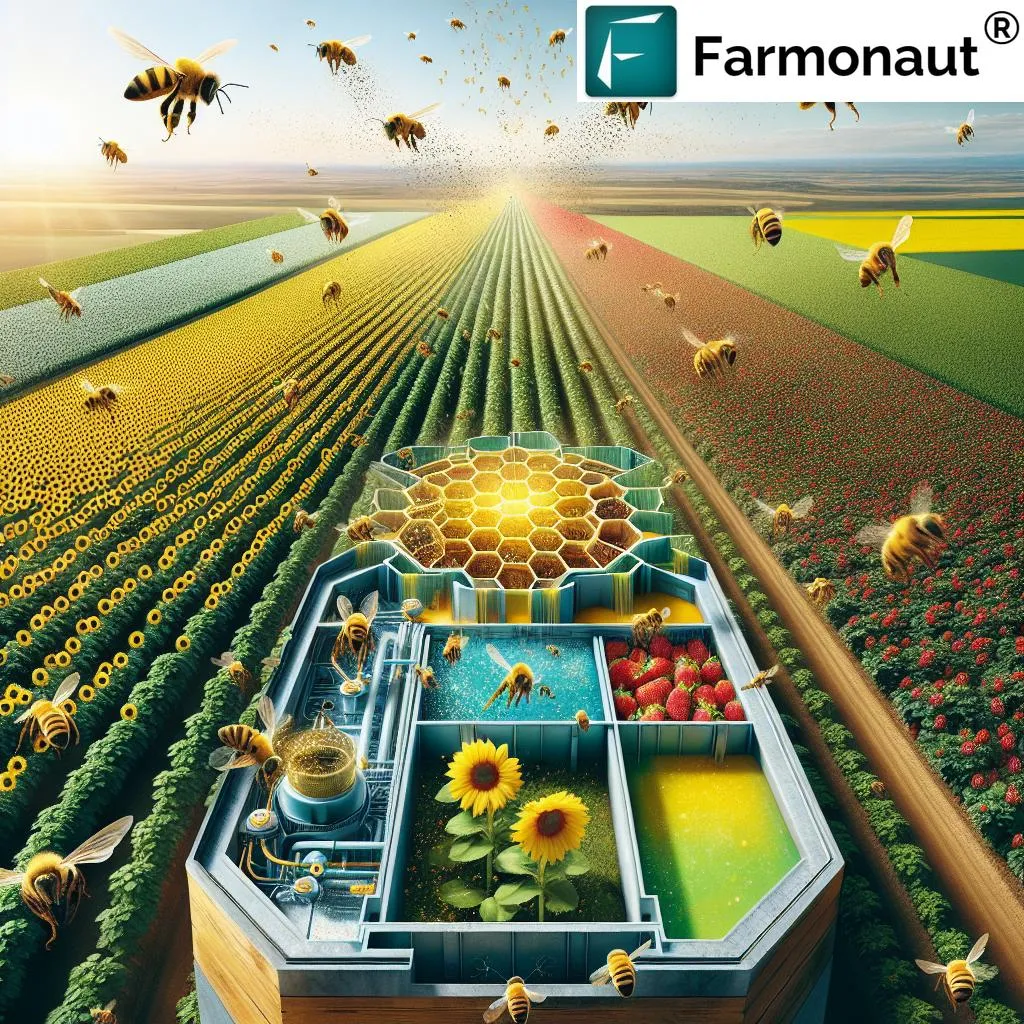In a groundbreaking development that could revolutionize sustainable agriculture, researchers have unveiled Bee Vectoring Technology (BVT), a nature-based strategy that harnesses the natural foraging behavior of bees to deliver targeted pest control. This innovative approach, detailed in a recent study published in ‘Green Technologies and Sustainability’ (which translates to ‘Teknologi Hijau dan Keberlanjutan’), promises to reduce reliance on synthetic pesticides, enhance ecological resilience, and support pollinator health.
Led by Wasswa Shafik from the School of Digital Science at Universiti Brunei Darussalam and the Dig Connectivity Research Laboratory (DCRLab) in Kampala, Uganda, the research highlights how BVT leverages managed pollinators like Apis mellifera and Bombus spp. to deliver beneficial microbial control agents directly to floral targets. “By utilizing the natural behavior of bees, we can precisely deliver antagonistic microorganisms to infection courts, significantly reducing disease incidence and improving crop yield quality,” Shafik explained.
The technology involves hive-mounted dispensers that release beneficial microorganisms, such as Clonostachys rosea CR-7 and Bacillus thuringiensis, which are then carried by bees to flowers. This targeted delivery system minimizes non-target contamination and supports pollinator safety. “This method not only enhances ecological resilience but also aligns with Sustainable Development Goals by advancing environmentally responsible and economically feasible pest management practices,” Shafik added.
The integration of BVT with digital agriculture platforms, including sensor-enabled smart hives and IoT-based field monitoring, allows for real-time decision support. This synergy of nature and technology offers a scalable, climate-smart solution that has shown significant promise in diverse cropping systems, from berries to sunflowers.
The commercial implications for the energy sector are substantial. As the world shifts towards sustainable practices, the adoption of BVT can reduce the environmental footprint of agricultural operations, making them more attractive to investors and consumers alike. “This technology represents a paradigm shift in pest management, offering a sustainable alternative that can be integrated into existing agricultural practices,” Shafik noted.
The regulatory landscape and biosafety considerations are critically assessed in the study, ensuring that BVT can be seamlessly integrated into integrated pest management (IPM) frameworks. As the agricultural industry continues to evolve, BVT stands out as a beacon of innovation, poised to shape the future of sustainable farming.
This research not only highlights the potential of BVT but also underscores the importance of interdisciplinary collaboration in driving technological advancements. As we look to the future, the integration of nature-based solutions with cutting-edge technology will be key to addressing the challenges of sustainable agriculture and energy production.

